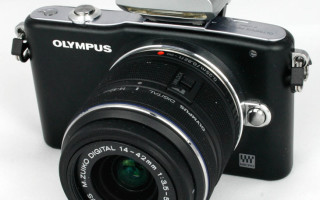Olympus PEN E-PM1: retro technology
Olympus PEN E-PM1: retro technology
Sergey Verveyko
| 05 December 2011 |
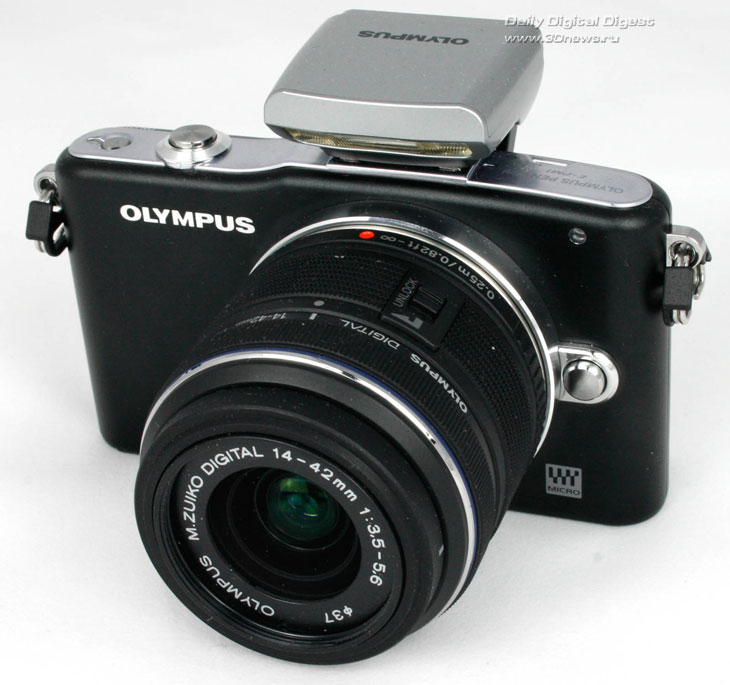
The Olympus PEN E-PM1 is the first member of the new Olympus PEN series of compact system cameras. The decoding of the letter index is simple - PEN mini, which hints at the small dimensions of the system camera. Although here we cannot help but recall the Nikon J1 and Pentax Q, which are even smaller, the body of the Sony NEX-3CK and even the Panasonic DMC-GF3, which is a little narrower and thinner, but only a little taller. In general, the E-PM1 does not deserve the title of the smallest. But Nikon J1 and Pentax Q are equipped with smaller sensors (especially the latter), and Sony NEX-C3K, although equipped with an ASP-C sensor, immediately loses in the size race if you attach a large standard zoom lens to it.

So it turns out that among system cameras in terms of the set of characteristics “weight/dimensions with installed lens/sensor size” there is only one competitor - Panasonic DMC-GF3. And the competitor, it should be noted, is extremely strong. In general, the characteristics of the Panasonic GF3 and the camera under test are very similar: both use micro Four Thirds, both record video in AVCHD format with Full HD resolution, the settings are also similar. But Panasonic has a touch screen and has a built-in flash, while Olympus does not have a built-in flash, but does have a hot shoe and an included interchangeable flash with a guide number of 10 versus 6.3 for its competitor.
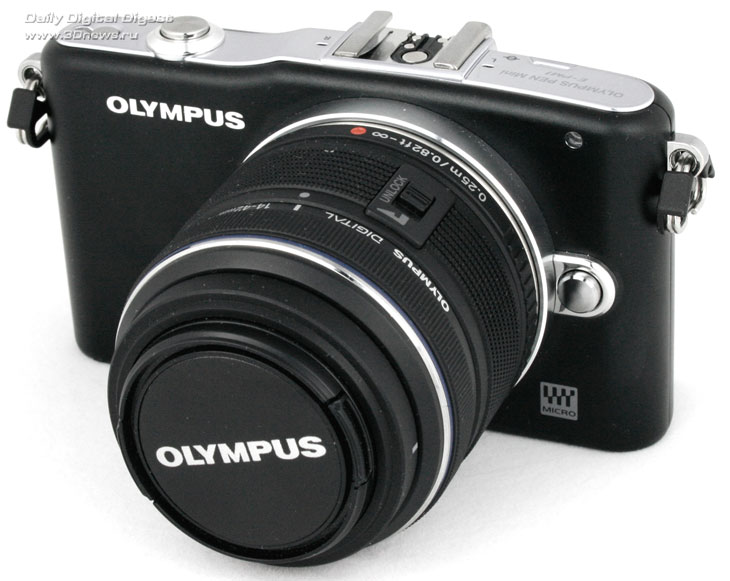
⇡#Technical characteristics declared by the manufacturer
Photo frame : 4032×3024, 2560×1920, 1024×768
Video : Full HD 1920×1080 (16:9) 60i, 17 Mbps (AVCHD)
Full HD 1920×1080 (16:9) 60i, 13 Mbps
HD 1280×720 (16:9) 60p, 17 Mbps
HD 1280×720 (16:9) 60p, 13 Mbps
HD 1280×720 (16:9) / 30 fps (AVI Motion JPEG)
SD 640×480 / 30 fps (AVI Motion JPEG)
| Olympus PEN E-PM1 | |
|---|---|
| Image sensor | 4/3″ High-speed Live MOS sensor 13.1 million pixels |
| Effective number of points, MP | 12,3 |
| Image saving format | Still image : JPEG (EXIF 2.2, DCF), RAW Video : AVCHD / AVI Motion JPEG |
| Frame size in pixels | |
| DPOF | DPOF support |
| Sensitivity | ISO 200-12800 (configurable, default ISO 200-1600) |
| Exposure, s | 1/4000-60 s |
| Exposure metering | ESP, spot, center-weighted, highlight, shadow |
| Exposure compensation | +/-3 EV in steps of 1/3, 1/2, 1 EV |
| Scene modes | Portrait, e-portrait, Landscape, Landscape and Portrait, Macro, Sports, Night Scene, Night Scene with Portrait, Children, High Key, Low Key, Digital Image Stabilization, Nature Macro, Candle, Sunset, Documents, Panorama, Fireworks, Beach and snow, Fisheye converter, Macro converter, 3D |
| White balance | Auto, Incandescent, Fluorescent 1, Daylight, Flash, Cloudy, Shade, White Set, Color Temperature Select. |
| Built-in flash | No (replacement flash included) |
| Flash Modes | Auto, Manual, Manual (Full, 1/4, 1/16, 1/64), Red-eye reduction, Slow sync with red-eye reduction, Slow sync, Slow 2nd curtain sync, Fill , Flash cancel |
| Flash guide number (ISO100 sensitivity) | 10 |
| External flash control | Sync: 1/160s / 1/4000s (Super FP) Type: TTL AUTO, AUTO, Manual, FP TTL AUTO, FP Manual Modes: Auto, Red-eye reduction, Slow sync with red-eye reduction , Slow sync, 2nd curtain slow sync, Forced, Manual Sensitivity: +/- 3 EV (1, 1/2, 1/3 EV steps) |
| Built-in flash and wireless flash control from camera | Number of channels: 4 Compatible external flash: FL-50R, FL-36R, FL-300R Control method: Triggered and controlled by built-in flash Modes: Auto, FP Manual, FP TTL Auto, Manual, TTL Auto, TTL Auto (TTL mode with preflash) Group settings: 3 |
| Self-timer | With 2/10 s delay |
| Storage device | SD, SDHC, SDXC |
| LCD display | 3.0″ color LCD, 460,000 dots |
| Interface | HDMI, USB, audio/video output. |
| Nutrition | Lithium-ion battery BLS-1, 7.8 Wh |
| Dimensions (W x H x D), mm | 109.5 x 63.7 x 34.0 mm (excluding protrusions) |
| Weight (excluding accessories), g | 217 |
⇡#Supply set and options
- Lens M.ZUIKO DIGITAL 14-42mm 1:3.5-5.6 II R,
- flash FL-LM1,
- battery BLS-1,
- charger BCS-1,
- Micro 4/3 mount cap (BC-2),
- shoulder strap,
- USB cable CB-USB6,
- audio/video cable CB-AVC3,
- Image management software [ib],
- disk with Olympus Viewer 2 software,
- instructions,
- warranty card.
⇡#Appearance and ease of use
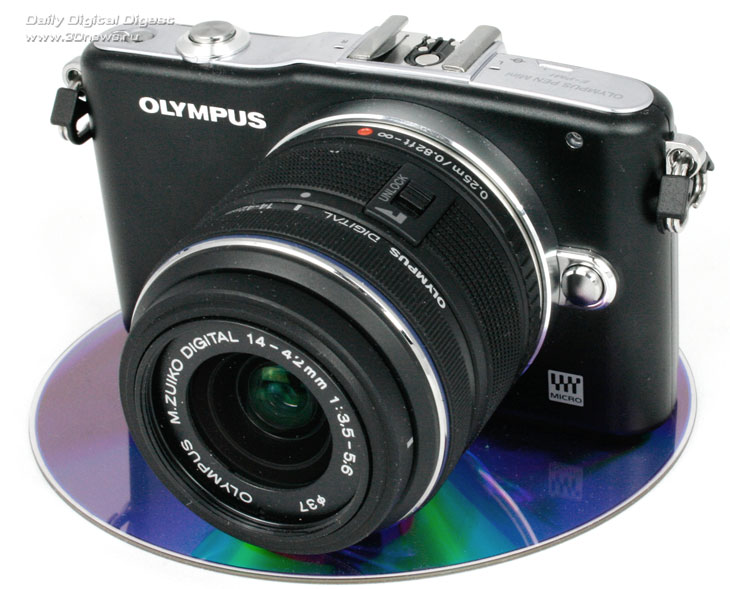
Due to the design features, the Olympus E-PM1 really seems miniature, and even with a “pancake” - even tiny, comparable to ultra-compacts. The external similarity with the older E-P3 camera is maintained only by the silver plate at the top and engraving on this very plate. The body is made of metal panels with a high-quality paint and varnish coating, which, even in black, is not afraid of prints and scratches.

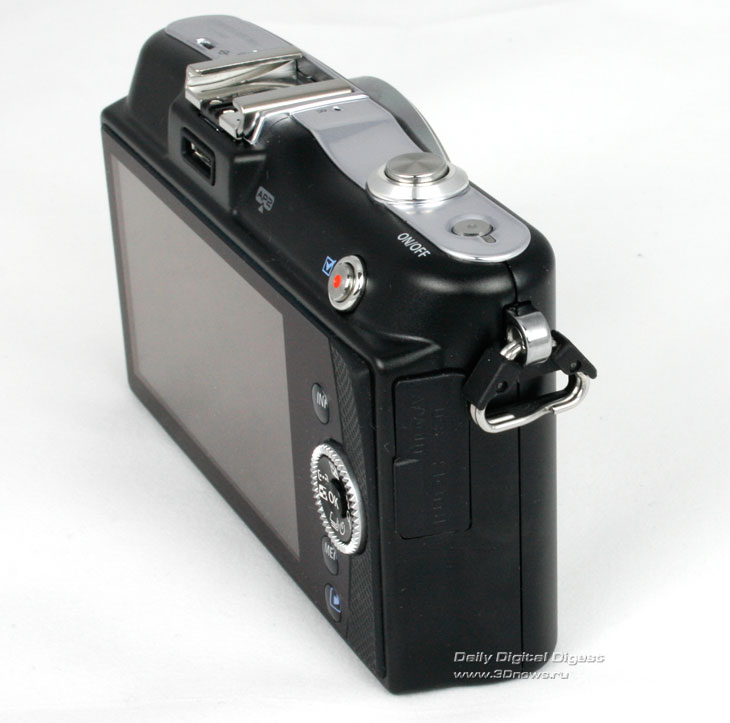
The back side is almost completely covered with display protection, which, for the sake of design, even covers part of the body with buttons. At the right edge there is a large rubber pad, which provides a more reliable fixation of the camera. It is worth recalling that the back pad of the Panasonic DMC-GF3 is very slippery and, although visually highlighted, does not provide additional fixation. But the GF3 has a protrusion on the front side that fits clearly under the middle finger of the right hand, which allows you not only to better grip the camera, but also to hold the angle (horizontally). There are no comments about the build quality - the camera seems to be cast as a single part.

At the front there is only a lens mount and an autofocus illuminator lamp, which also serves as an indicator for the automatic shutter release timer.
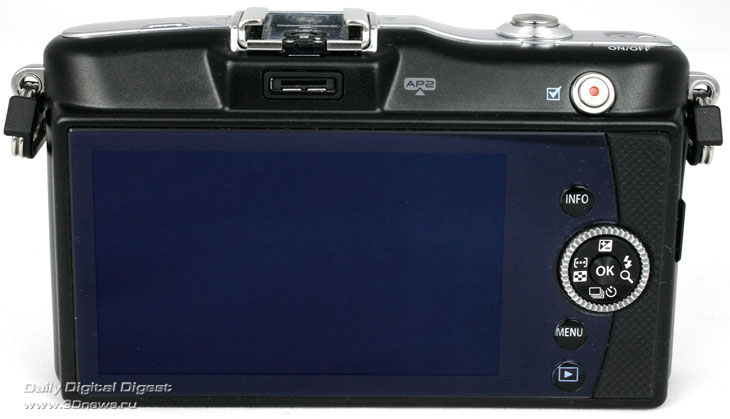
At the back above the screen there is an accessory port, and to the right there is a video key, a button for changing the display display mode, a round multifunction key with a rotating rim and an enter button in the center, a key for calling the main menu and switching to viewing mode.
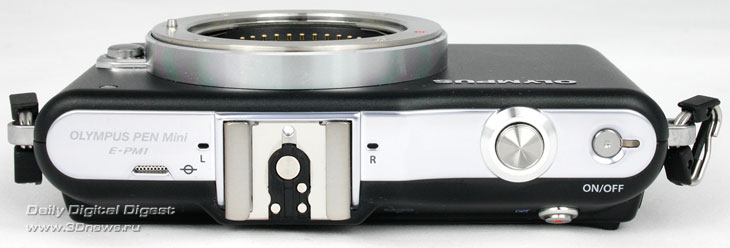
The top of the body is quite busy - the system speaker, a pair of microphones installed on the sides of the hot shoe, the shutter key and the power key.

At the bottom there is a connector for mounting on a tripod, as well as a compartment for installing a memory card and battery.
The left side surface is empty. On the right are the connectors for USB/AV and HDMI cables. It is worth noting that, as before, Olympus uses its own connector for connecting a USB cable, and to connect via HDMI you need a not very common HDMI cable type D, while the vast majority of cameras and smartphones use type C. However, even Sony I've already switched to standard connectors.
Olympus E-PM1 Compact Mirrorless Camera Review
The Olympus E-PM1 is the smallest and simplest mirrorless camera in the Japanese company's lineup and, accordingly, the most inexpensive. The camera belongs to the Micro Four Thirds system. This means that all of the system's accessories are supported, as well as regular Four Thirds lenses from Panasonic, Olympus, and third parties.
Specifications:
• 4/3 Live MOS matrix, 17.3x13 mm, 12.3 MP;
• video with stereo sound: 1920×1080 at 60 frames per second;
• mechanical image stabilization (up to 3 stops);
• 35-zone autofocus, face detection;
• TFT display with a diagonal of 3.0″ and a resolution of 460,000 pixels;
• exposure metering: spot, multi-zone, center-weighted;
• exposure compensation: from –2 to +2 EV, step 1/3 EV;
• worked shutter speeds: 1/4000—BULB s;
• white balance: automatic, 8 presets, color temperature within 2000–14,000 K, white balance bracketing;
• scene shooting: “Portrait”, “Landscape”, “Landscape and portrait”, “Macro”, “Sports”, “Night shooting”, “Night shooting with portrait”, “Children”, “High key”, “Low key” ", "Digital image stabilization", "Nature macro photography", "Candle", "Documents", "Panorama", "Beach and snow", "Fireworks", "e-Portrait", "Sunset", "3D";
• USB, HDMI;
• memory card support: SD, SDHC, SDXC;
• 34 menu languages;
• power supply: rechargeable battery BLS-1, 1100 mAh;
• aluminium case;
• dimensions: 114.6 x 72.2 x 41.5 mm;
• weight: 216 g.
Please note that the camera is equipped with a built-in stabilization system, a connector for connecting branded accessories (for example, an electronic viewfinder) and a hot shoe, but does not have a built-in flash. Instead, a small external flash is included in the package.
It is important to remember: Micro Four Thirds mirrorless cameras have significantly smaller sensors than cameras with APS-C sensors, which is reflected in the quality of photographs, depth of field, and of course, noise at high ISO values. Today, all budget SLR cameras, mirrorless cameras Samsung NX, Pentax K-01 and the Sony NEX lineup are produced using APS-C sensors.
Appearance
The camera doesn't have the same sophisticated design as the older models in the line, but at the same time it doesn't resemble an inexpensive point-and-shoot camera like the Olympus E-PL1. Without a lens, the model in question is almost identical in size to the Olympus XZ-1 prosumer compact camera, i.e. it could fit in a jacket pocket.

The camera is available in several body colors, including beige, brown, purple, red, white and silver. One of the widest selections (on par with Sony NEX) hints at the target audience - youth and women. We took the camera in black.

The E-PM1 mirrorless camera is housed in a durable but fairly lightweight metal body. There is a neat plastic insert on the top of the device, and almost the entire back is covered with a glossy acrylic panel, which also protects the display.
The front part of the camera is extremely simple - only a bayonet mount for installing optics, a blocking button and an autofocus illumination lamp. There is no flash, as there is simply no room left for it in the compact body of the device.

On the top of the E-PM1 there is a recessed on/off button, as well as a shutter key. Two small holes for stereo microphones are located near the hot shoe, and a speaker is installed a little further.
The hot shoe is the only way to mount the flash on the camera. To prevent the contacts from becoming dirty, there is initially a plastic plug there. The package includes a small flash that fits into the hot shoe. It can also accommodate other Micro Four Thirds accessories, such as an external directional stereo microphone or a high-resolution electronic viewfinder.

Connectors for connecting to a computer and HDMI are located on the right side of the case under a plastic plug.
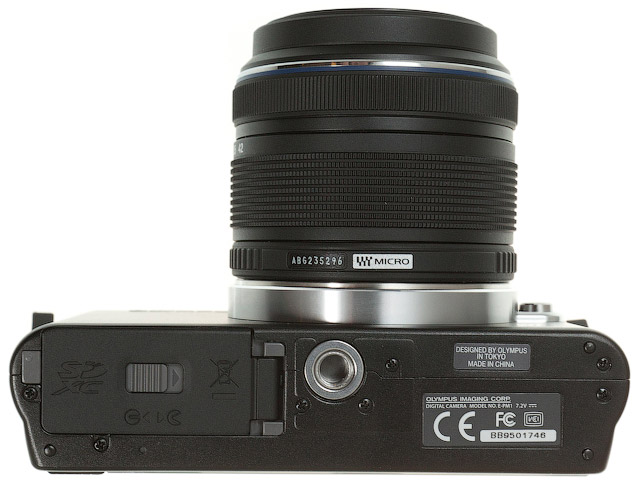
At the bottom there is a thread for mounting the camera on a tripod, as well as a compartment containing the battery and memory card. By the way, E-PM1 supports all SD card standards, up to SDXC.

As we have already noted, with pancake lenses the camera is very small and compact. But, of course, it is inferior in versatility to compact models with zoom lenses. When working with the M.Zuiko Digital 14-42mm f/3.5-5.6 kit lens, the device is not pocket-sized, although it does not take up much space. However, like other cameras in this class.


Conceptually, the model under consideration is closer to compact cameras than to SLR cameras. This is easy to understand if you look at the device's controls - a few buttons, a traditional joystick with a scrolling dial, and nothing more. There are no customizable keys or additional wheels for quickly setting settings. Although this is perhaps not so bad, because the camera is designed for photographers who are demanding about the quality of images, and not about the professionalism of operating the camera.

The INFO, MENU and playback mode buttons are made translucent, which is effectively complemented by a huge protective acrylic insert that occupies the entire back of the camera.
A surprisingly comfortable grip is provided by the large, slightly convex rubber insert in the right corner of the device. It is better to hold the camera with your other hand under the lens, this way it is more convenient to control it.

The E-PM1 model has a 3-inch diagonal display with a resolution of 460,000 pixels. That is, he is quite ordinary and unremarkable. Thanks to the high-quality anti-reflective coating, the screen is easy to read in bright sunlight and has good viewing angles. Acrylic scratches easily, so you should be careful when transporting the camera.
The camera has a fairly high continuous shooting speed of 5.5 frames per second. This is higher than on budget DSLR models, but is not a record figure among mirrorless cameras.
The small number of camera controls is compensated by a simple, clear, slightly unusual and very beautiful menu. Contrary to all the patterns, it is not vertical, but horizontal. Thanks to this, there is no need to scroll through pages at all in the main menu, and you can feel the advantage of a widescreen display.
Initially, it seems that the camera does not have wide settings, as is customary for devices of this class. However, if you spend some time exploring the menu options, the E-PM1 turns out to be significantly more complex and interesting.

Unlike system settings, contextual settings and shooting options are accessed through the OK button. This menu is organized in the same way as on Olympus compact cameras - a vertical list in the right corner calls up a horizontal set of options at the bottom of the screen.
It’s a little unusual that the scroller in the menu works counterclockwise. This will only seem natural to Mac OS X Lion users, but not to most.

In addition to the automatic scene recognition mode, the camera has a full range of creative zone modes (PASM). You can also find a low-light shooting mode, a set of scene programs (including modes for automatic portrait retouching) and a set of ART filters with Tilt-Shift lens simulation and HDR effects. All ART filters also work when recording video.
Test materials
The camera was tested with the M.Zuiko Digital 14-42mm f/3.5-5.6 lens. Given a crop factor of 2 for a Micro Four Thirds system, this is equivalent to a 28-84mm lens. Thus, this accessory will be convenient for shooting landscapes and portraits.

When folded into a non-working state, the lens becomes half as long. The same accessories are available for Samsung NX mirrorless cameras, and Lumix has released an even more compact motorized zoom lens.
The camera is built on a 12-megapixel Live MOS matrix. The same one is installed in the older model E-P3.
The frequency of signal transmission from the matrix increased to 120 frames per second, which made it possible to speed up the autofocus system. If the autofocus in the E-PL1 was good, but imperfect, then the focusing in the E-PM1 does not cause any complaints, and in terms of speed it is approximately the same as Lumix mirrorless cameras. Without exaggeration, you won’t feel the difference in speed with an entry-level DSLR; the camera is focused instantly.
It takes less than a second from turning on the camera to being ready to shoot. The main thing is to remember to unfold the lens.
In terms of image quality, everything is expected for Micro Four Thirds: at ISO 1600 there is already noticeable noise. Photos taken with the Sony NEX are much better at these sensitivity values, which is due to the larger sensor.
Olympus PEN Mini/E-PM1
Olympus Tough TG-5
Olympus OM-D E-M10 Mark II Kit
Olympus Pen E-PL9 Kit
Olympus OM-D E-M10 Mark III Kit
Olympus Pen E-PL8 Kit
Olympus OM-D E-M1 Kit
Olympus OM-D E-M5 Mark II Kit
Olympus Pen E-PL8 Body
Canon EOS 4000D Kit
Canon PowerShot SX430 IS
Canon PowerShot G9 X
Nikon Coolpix B500
Canon EOS 2000D Kit
Canon PowerShot SX540HS
Nikon D5600 Kit
Canon PowerShot SX620HS
Nikon D7500 Body
Canon EOS 5D Mark III Body
Nikon D5300 Body
Olympus PEN Mini/E-PM1
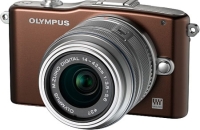
The second name of the camera - PEN Mini - is completely justified. Complete with the main lens, it is indeed very compact: although it is not a pocket camera, it is certainly much more comfortable to carry than a DSLR.
To achieve the small footprint, Olympus has chosen a design and interface designed for beginners, with a minimal number of buttons and switches. Many settings are hidden deep in the depths of the menu and are not easy to find, but nevertheless, almost all professional functions are implemented. You can be sure that the PEN Mini's range of capabilities is not inferior to models designed for enthusiasts.
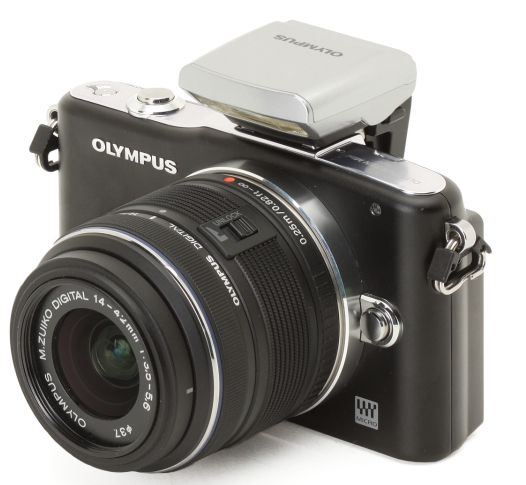
So this is a camera for two groups of buyers. For beginners or those wishing to upgrade a compact camera, the value of the PEN Mini is its small size and weight, low cost, and interchangeable optics. For enthusiasts, the camera offers features comparable to the Olympus E-P3 and E-5 class cameras, but packed into a compact body.
Key Features of Olympus PEN Mini E-PM1
- Matrix MOS, 12 megapixels.
- 120Hz Fast AF focusing system.
- Connectable external flash, included.
- Built-in light source for autofocus system.
- 460,000 pixel screen, 16:9 aspect ratio.
- Dual-core TruePic VI processor.
- Video recording in AVCHD mode, 1080i resolution, 60 frames per second.
- Stabilization system in the camera body.
Camera layout
The PEN Mini has fewer controls than most compact cameras, so you might mistakenly assume it has a touch screen. In fact, all adjustments are made using the traditional mode selection wheel and three buttons. The lack of buttons isn't a problem when shooting, but it's a little confusing in playback mode. Thus, clicking on the left and right edges of the main ring does not lead to scrolling through photos, but to zooming in. You can scroll through by rotating the ring. Factory settings can be changed, but to do this you need to dig deep into the settings section.
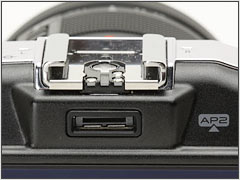
Port for connecting additional options: Bluetooth adapter or electronic viewfinder. The latter is convenient to use when shooting in bright sunshine, bringing the camera to your eye while choosing a scene for the photo.
The PEN Mini comes with an external flash that fits into the standard shoe and is powered through the options port. This design has both pros and cons: if you're not using the flash, it's easy to detach, but when the flash is connected, you can't use options that can be quite useful, such as a Bluetooth adapter.
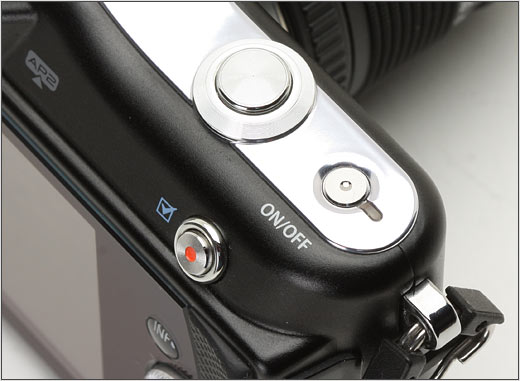
In addition to the power and shutter buttons, there is a special video recording button on the top surface of the camera. Pressing it starts recording video from any operating mode.
Performance
The E-PM1 impresses with its overall performance and responsiveness. Autofocus is very fast, at least when shooting stationary subjects, and thanks to intelligent buffering, continuous shooting is also lag-free. Continuous shooting can be done in various formats: when shooting in JPEG format, 9 frames are taken at a speed of 5 fps and completely recorded on the memory card in 4.5 seconds; When shooting in JPEG+RAW format, 8 frames are captured at 5 fps and fully written to the memory card in 10.7 seconds. Once the camera's buffer is full, the camera continues shooting, but at a slower speed. During such shooting, the image on the screen lags by about two frames. All other operations - moving between menu items, scrolling through photos - are carried out smoothly and intuitively: you always get the result you expect.
Autofocus
Like other Olympus models, the camera is equipped with a light source for better autofocus. It can be turned off if you want to take photos without drawing attention to yourself, but in most cases it is better to use.
For everyday shooting, autofocus works very well. With spot focusing, the system allows you to select one of 35 possible points and quickly lock focus to it. Significant progress has been made in focusing in low light conditions thanks to the installation of an additional light source. It doesn't solve every problem, of course, but in simple situations, such as shooting a medium-sized stationary object from a few meters away, the quality is excellent.
When focusing on moving objects, the limitations of the autofocus system, which operates on the principle of contrast measurement, are affected. As you know, DSLRs, for the most part, use phase focusing for pointing and achieve better performance and quality. Of course, Olympus offers various focusing methods for continuous shooting of moving subjects, but they have significant limitations.
Image stabilization
The camera has two different types of stabilization: optical for still images and digital for video. Optical stabilization is performed by mechanically shifting the sensor, counteracting camera shake. It has three modes: in the first mode, stabilization is carried out, leveling vertical and horizontal jitters, in the second - only vertical, and in the third - horizontal. This was done for shooting objects moving in the frame, such as cars or falling leaves.
Optical stabilization helps in some cases to get a clearer picture. Approximately, the shutter speed duration, at which there is no noticeable deterioration in image quality due to camera shake, can be increased three times, compared to shooting under the same conditions and with the stabilization system turned off.
Digital stabilization when shooting video is based on an attempt to compare image elements and align the boundaries of objects by bevelling them. Although camera shake is suppressed, digital artifacts appear strongly and the image bends unnaturally, so this stabilization method is very controversial.
Noise and resolution
The E-PM1 uses the Panasonic 12MP LiveMOS sensor and the noise reduction system from the older model, the Olympus E-PL3. In JPEG, the Olympus camera traditionally does a good job of balancing detail and noise reduction, although in some modes you might want to turn down the noise reduction because the default settings are too aggressive.
The resolution achievable by a camera is determined by various parameters, but the theoretical limit of resolution is determined only by the resolution of the camera matrix and coincides with it. For an Olympus camera it is 3000 horizontal lines. In a real camera, resolution is influenced by many parameters. The main ones are the quality of the optical system and the implementation of the anti-aliasing system. The latter plays a particularly important role, since, on the one hand, it improves image quality, on the other, it reduces the resolution of small details. The actual resolution is 2300, which is about 20% lower than the theoretical limit. Very good result.
Image quality
The PEN Mini camera's image quality is very high in both JPEG and RAW. Images are produced in typical Olympus performance with correct exposure and excellent color rendition. Image quality is indistinguishable from more expensive Olympus models.
The E-PM1 light meter works reliably. This is noticeable by the fact that stray glare is quite rare. White balance is also measured very accurately, and difficult-to-reproduce skin tones look natural. One area where the E-PM1 lags behind the competition is in high sensor noise. Its 12-megapixel sensor is clearly inferior to the new APS-C sensors in this regard. Results are acceptable up to ISO 3200, but higher values are problematic.
But here the optical stabilization system comes to the rescue, helping you shoot with longer shutter speeds and lower ISO values. Unlike many other cameras in which stabilizers are implemented in the lenses, here the stabilization system is located in the camera body itself and works with any lenses, including those attached using an adapter.
Art filters
Olympus was the first to release a camera with built-in processing filters, the E-30, in 2008. The idea was to provide image processing capabilities similar to those offered by Photoshop.
Like previous models, PEN Mini has six filters. The camera offers two ways to shoot using filters. The simplest is to switch to ART mode and select a filter.
The expected processing result can be observed in advance in preview mode. What is especially important is that in ART mode the camera works with shutter priority and allows you to make almost any manual shooting settings.
The second way to use artistic filters is to apply them to a finished photo taken in RAW format. This can be done both in the camera itself and on a computer using the software supplied in the kit. With some limitations, artistic filters also work when shooting video.
Conclusion
- Excellent quality at low ISO.
- Fast focusing and shooting, additional autofocus lamp.
- Shooting HD video.
- Excellent set of filters, RAW image processing.
- Wide range of customization options.
What raises questions
- Large noise at high ISO values.
- High JPEG noise reduction ratio at factory settings.
- The 16:9 viewfinder aspect ratio does not match the 4:3 aspect ratio.
- There is no touch control menu.
- No orientation sensor.
- A complex menu for its audience.
The E-PM1 is a neat, easy-to-use camera made for everyday use. It can be called a successful attempt to fill the niche between inexpensive compact cameras and full-fledged DSLRs.
The minimalist approach and retro design forced the creators to abandon many of the already familiar features and functions: touch controls, dedicated buttons for setting white balance and selecting ISO sensitivity, and a comfortable hand grip on the body. All this was sacrificed for the sake of style.
Review of the Olympus Pen Mini E-PM1 digital system camera. Cute and inexpensive

I still can't understand why Olympus released virtually the same camera in the three different guises that this Micro 4/3 system includes. That beats me!
Check out digital-photography-school.com for my latest reviews of the E-P3 and Lite E-PL3 cameras. Now we will talk about the Mini E-PM1 with very similar characteristics, but different prices and body sizes.

This model is a mini version in its line. And as an entry-level model, it's certainly great. If you believe that style must go hand in hand with functionality, then you'll be delighted - the Mini is available in six different body colors: black, brown, pink, white, silver and purple. The model in question came in a silver color and with the same f3.5/14-42mm kit lens, exuding sparkle.

Aimed at beginners, the Mini is small and light, weighing just 401g with the 14-42mm kit lens, flash, memory card and battery attached.
Features of Olympus Pen Mini E-PM1
The fixed 16:9 display is noteworthy, ideal for widescreen photography and less suitable for 4:3, but stunning for Full HD 1920 x 1080 AVCHD and 1280 x 720 MPEG4 video. The bad news is that if you want to take a still photo while recording video, this will cause the video to pause and then resume.
The maximum resolution of photos taken with the 12.3-megapixel Live MOS sensor is 4032 x 3024 pixels, so you can print them in 34 x 26 cm format.
The camera provides shooting modes such as iAuto, Program AE, aperture or shutter priority and manual, found in the viewfinder menu.
External controls are small, like the top panel, which houses the power and shutter buttons, and a little lower is the video recording button. For me, these 3 buttons are too close to each other, no more than the width of a thumb.
There's a large LCD screen on the back, as well as a 4-way rocker wheel, Menu, Info (display options) and playback buttons, but again they're all too cramped, small and hard to read.
The viewfinder menu is very decorative, but becomes a powerful tool as you get used to it. Some actions such as deletion, image size, file format, etc. are available in the viewfinder menu. Others, such as ISO setting, white balance, AF modes, are accessible through the LCD display.


The camera has 6 artistic filters: pop art, soft focus, grain, pinhole, diorama and dramatic tones. I must admit that I liked them and appreciated how, when used skillfully, a simple photo can be turned into something simply magical.

What attracts the user's attention is the camera's ability to shoot continuously at 5 frames per second, which is ideal for photographing children, sports and animals.
Getting Started
With the power turned on, I was ready to shoot as fast as I could press the button.
Olympus Pen Mini E-PM1 ISO test
In my opinion, you can freely use ISO up to 1600; After the 3200 mark, noise increases, and at ISO 12800 it is too intrusive.





Conclusion
Quality: above average among compact cameras.
Why you should buy: Small, lightweight camera with interchangeable lenses for beginners; excellent burst speed.
Why you shouldn't buy it: No tilting LCD display.
FYI, an adjustable, detachable flash is included, but you won't have an eye-level viewfinder with it; The flash has a guide number of 10 at ISO 200. You must first remove the viewfinder if you want to attach the flash to the hot shoe.



Specifications of Olympus Pen Mini E-PM1:
Image Sensor: 12.3 million effective pixels, Live MOS.
Lens: Micro 4/3 system.
Shutter modes: iAuto, Program AE, shutter and aperture priority, manual.
Actual sensor size: 17.3×13.0 mm, Live MOS.
Crop factor (relative to 35mm film): 2x.
Shutter speed: 60 to 1/4000 second, Bulb; Sync speed: 1/60-1/160 seconds
Continuous shooting speed: 4.1/5.5 fps (max. 9 RAW images).
Memory: SD/SDHC/SDXC/EyeFi memory cards. Class 6 speed is recommended for video shooting.
Image dimensions (in pixels): from 4032×3024 to 640×480; video: from 1920x1080 to 1280x720.
Viewfinder: 7.6 cm diagonal LCD screen (460,000 pixels).
File formats: JPEG, RAW, JPEG+RAW, MPO (3D) AVCHD, MPEG4.
Color space: sRGB, Adobe RGB.
ISO sensitivity: Auto, 200 to 12,800
Interface: USB 2.0, HDMI mini, AV.
Power: Rechargeable lithium-ion battery, DC socket.
Dimensions: 109.5×63.7×34 mm (WxHxD).
Weight: 265 g (including battery and memory card).
Posted by Barry Smith
Translation: Popil Katerina
Previous materials in this section:
 Nikon D800, D800E. Press releases
Nikon D800, D800E. Press releases
The new no-compromise Nikon D800 camera is designed to meet the future needs of photography and videography today.
 HLD-6. Feed handle for OM-D
HLD-6. Feed handle for OM-D
All-weather unique two-piece power grip for landscapes and portraits
 Fujifilm X10 digital camera review
Fujifilm X10 digital camera review
Apparently Fujifilm thinks cameras haven't been the best since 1954, and maybe they're right
The camera is excellent. I’ve been using it for a year and a half, I don’t have the slightest complaints. Among the advantages, I’d like to note the metal body. 5 types of video recording. Small sizes. A huge number of manual settings for everything. With a pancake lens, it fits perfectly in a jacket pocket, which is ideal for street photography. And built-in the Optistab carcass generally throws its closest competitors overboard. And the most important thing is the price. I bought this device for only 3343 Ukrainian mushrooms. The closest competitors with a plastic body and a stub in the lens cost two or three times more.
Retro-style Olympus PEN-F mirrorless camera with 5-axis stabilization
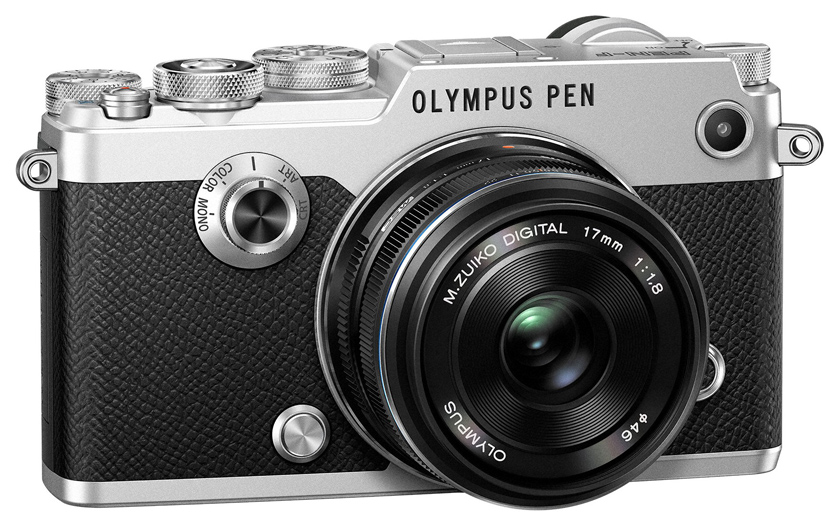
Olympus has unveiled a new retro-style flagship mirrorless camera, the PEN-F, with interchangeable Micro Four Thirds optics. The camera has an all-metal body without a single visible screw. Olympus considers this to be one of the most beautiful cameras in the company's history. The camera uses a 20-megapixel Live MOS sensor with physical dimensions of 17.3x13 mm without a low-pass filter.
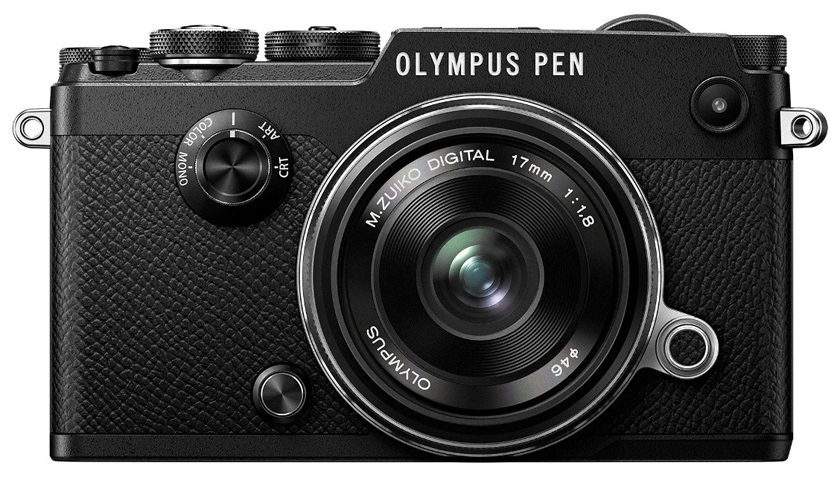
The seventh generation True Picture graphics processor is responsible for image processing, and there is a 5-axis image stabilizer. The camera is equipped with a high-resolution mode of 50 megapixels, as in the OM-D line (apparently, combining several frames). The mechanical shutter can shoot at shutter speeds up to 1/8000, and the electronic shutter can shoot at shutter speeds up to 1/16000. Continuous shooting up to 10 frames per second is supported.

The camera is capable of shooting Full HD video with a bitrate of up to 77 Mbps and frame rates of 60p, 50p, 30p, 25p and 24p, 4K Time Lapse (interval burst shooting, which can then be combined into a 4K video) and Live Composite (a mode for shooting star tracks , lightning and light painting). There is an ultrasonic filter Supersonic Wave Filter to automatically clean the sensor from dust.

The camera is equipped with an electronic OLED viewfinder with a resolution of 2.36 million dots and a rotating touch screen. The camera will be supplied both without a lens and in kits with M.ZUIKO DIGITAL ED 14-42mm 1-3.5-5.6 EZ Pancake or M.ZUIKO DIGITAL 17mm 1:1.8. The price of the “carcass” is $1200.
The new PEN-F camera is designed to meet the highest demands. This is the most advanced camera in the iconic PEN series and one of the most beautiful system cameras ever produced by Olympus!
It is the ideal tool for those who seek the best image quality with maximum freedom of creative expression. It is the world's first compact system camera capable of shooting at 50 megapixels. The camera is equipped with the world's best 5-axis image stabilization, a built-in high-precision OLED viewfinder with a resolution of 2.36 million dots and a rotating touch screen.
Thanks to an all-new image sensor, the PEN-F's images feature low visual noise, wide dynamic range and accurate color reproduction.
Never before has a camera this high-end looked so good.
PEN-F is the standard of style and build quality. The creators of the new PEN-F put their souls into combining the highest technical characteristics and rich historical heritage. The result of their work is luxurious design and true innovation.
PEN-F is a collector's item. You will not see a single screw on the surface of the camera, which once again emphasizes the highest level of workmanship.
Our designers did their best to make it feel as good in your hands as it looks. The metal mode dials are a signature feature of the renowned PEN school of design, combining modern and retro elements with luxury metal materials and a high-quality finish. Just like the classic “film” silhouette of the body, the look, feel and performance of the camera will evoke special sensations that you will want to remember forever.
All the innovation and beauty of the PEN-F would be meaningless if it couldn't deliver high image quality and compactness, but this is where the Olympus camera's edge over the competition is greatest. Equipped with the latest sensor and image processing technologies, PEN-F provides the highest quality images.
The camera will be available in mid-February 2016 in black and silver, body kit, M.ZUIKO DIGITAL ED 14-42mm 1-3.5-5.6 EZ Pancake lens kit and lens kit M.ZUIKO DIGITAL 17mm 1:1.8.
When art and innovation come together
PEN-F is the embodiment of technical and aesthetic perfection. All our best developments, based on 80 years of experience, have been embodied in this camera:
- · New low-noise 20-megapixel Live MOS sensor for gorgeous photos in any light;
- · Best 5-axis image stabilization;
- · Advanced seventh generation True Picture graphics processor;
- · 50-megapixel high-resolution mode for exceptional detail in static frames;
- · Ultra-high-resolution OLED electronic viewfinder with 2.36 million dots and a rotating touch screen for comfortable shooting in any conditions;
- · All-metal housing and exceptional build quality - no visible screws.
- · A unique “Creative Mode Dial” that includes working with creative filters, fine-tuning the Color Creator color solution, as well as a new “Black and White Mode” function with a huge number of sub-settings;
- · Mechanical shutter with the ability to shoot at shutter speeds up to 1/8000;
- · Electronic shutter for silent shooting with the ability to shoot at shutter speeds up to 1/16000;
- · High-speed continuous shooting 10 frames per second;
- · Full HD video with a bitrate of up to 77 Mbit/s, and a wide selection of formats with different frame rates - 60p, 50p, 30p, 25p or traditional 24p for cinema;
- · 4K Time Lapse - interval shooting mode for taking a series of images, which can then be combined into a high-quality 4K video;
- · Live Composite – a revolutionary mode for shooting star tracks, lightning and painting with light;
- · Supersonic Wave Filter (ultrasonic filter for automatically cleaning the sensor from dust, without additional cleaning programs).
Design breakthrough of the PEN model
PEN-F is more compact and lighter than massive DSLRs. She also looks much more attractive. This impression intensifies when you pick up the camera. Pleasant to the touch and elegant to look at, it makes it clear that this camera is for people who know a lot about beauty. The Olympus design team has come a long way to create the PEN-F, a potential style icon worthy of joining the F series.
Olympus PEN E-PM1: retro technology
Having co-developed the Micro Four Thirds mirrorless system with Panasonic four years ago, Olympus has expanded its system camera fleet to 7 models. The current Photokina exhibition has added two more mirrorless cameras - Olympus PEN E-PL5 and PEN E-PM2.
Olympus PEN E-PL5 and E-PM2 are noticeably different in appearance, but their internals are virtually identical. A new 16-megapixel Micro Four Thirds sensor with an ISO range of 100-12800, a three-inch touch display, high burst speed, an interesting set of artistic filters - and all this at an affordable price.


Front side of Olympus PEN E-PM2
And from the back, both models are very similar. In addition to the display, there are buttons for deleting, viewing, turning on video recording, INFO and MENU keys, as well as a four-way navigation pad with a central button. The E-PL5 has two more zoom keys.

Olympus PEN E-PM2 rear view
The compartment for the memory card and battery is located at the bottom, everything is standard here. The cameras are powered by a BLS-5 Li-Ion battery, a full charge of which is enough for approximately 360 shots.
The Olympus E-PM2 deserves to be one of the most compact system cameras on the market.
Its dimensions are only 110 x 64 x 34 mm and weighs 269 g. PEN E-PL5 is larger by a few millimeters. The weight of both cameras is comfortable enough to be worn painlessly around the neck. Functionality
Olympus PEN E-PL5 and PEN E-PM2 are identical in their capabilities. Both are created using the 16.1-megapixel CMOS sensor already found in the OM-D E-M5. Sensitivity adjustment is possible from ISO 100 to 25,600. As you know, the sensor was developed by Sony - Olympus representatives themselves admitted this a few months after the release of the OM-D E-M5.
The TruePic VI processor was also “borrowed” from the OM-D E-M5, but the implementation of its capabilities does not seem to be as complete. For example, the burst rate is 8 frames per second versus 9 for the OM-D E-M5. Autofocus is blocked. With autofocus running, this value drops to 3.5 frames per second.
It is important that both presented cameras contain a mechanical image stabilization system with a moving matrix. The system processes vibrations along two axes. A useful innovation is the function of disabling stabilization in the menu in case of using Panasonic lenses with the Power OIS function

None of the new cameras have a built-in flash. The Blitz is supplied complete and is attached to the appropriate port. A proprietary AP2 interface is provided for this purpose. However, a standard hot shoe is also available. Additional accessories include an electronic viewfinder, an external stereo microphone and a Bluetooth module.
The contrast autofocus system has also been updated. The 35-point system, called Frequency Acceleration Sensor Technology, promises fast sharpness adjustments when using cameras in combination with the M.Zuiko Digital ED 12-50mm f/3.5-6.3 EZ lens. We tested its performance with the Lumix X 12-35/2.8 and Leica DG 25/1.4 lenses. In both cases, focusing was instantaneous. The touch screen, of course, allows you to change the focus point with one touch.
Both new products are capable of recording video in 1920x1080 resolution at 30 frames per second with progressive scan. An interesting feature here is the ability to apply artistic effects directly during the shooting process and alternate them, without interrupting the shooting process. This is implemented in an unusual way and has not been seen by competitors. Thanks to the touch interface, it is also possible to specify the focus point during video recording.
New to PEN compact cameras is the ability to edit RAW files in-camera. It is now possible to change the white balance, use noise reduction and apply various artistic effects, and then convert the result to JPEG without connecting to a computer. This is quite convenient, especially for those who do not plan to use Photoshop or Lightroom for conversion or processing.
Some changes have been made to the set of artistic filters. An updated HDR shooting mode has appeared, as well as a Watercolor filter, bringing their number to 11. However, neither the Olympus PEN E-PL5 nor the PEN E-PM2 have the popular built-in Wi-Fi module. However, engineers have provided the ability to transfer data over the air using Toshiba FlashAir memory cards. A special application has been developed for communication with mobile devices based on iOS and Android. You can also transfer data via Bluetooth using the optional PenPal accessory.
10 best modern devices with retro style
Receive one of the most read articles by email once a day. Join us on Facebook and VKontakte.
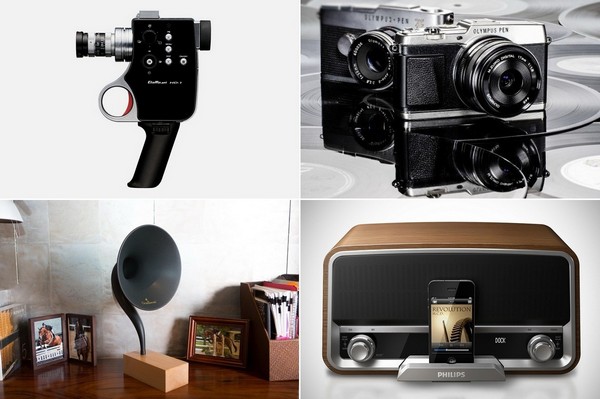
Bellami HD-1 Digital Super 8 – video camera in retro style
Many famous directors began their careers by filming amateur videos using simple video cameras with 8 mm film. The “golden time” of such devices was in the seventies of the twentieth century.
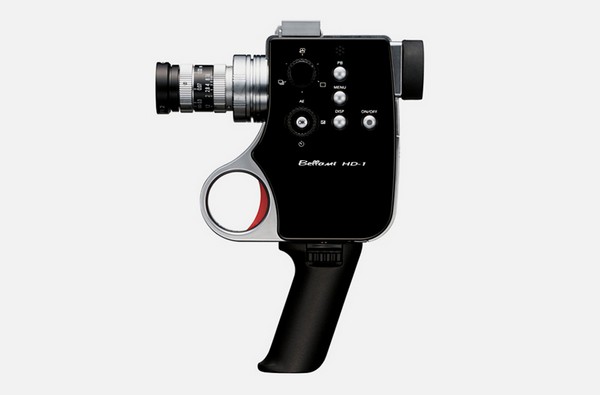
And in 2014, the Japanese company Chinon launched the Bellami HD-1 Digital Super 8 digital video camera, created in a retro style. The molded body of this device almost completely replicates the design of a classic camera from the seventies. But its filling is quite modern.
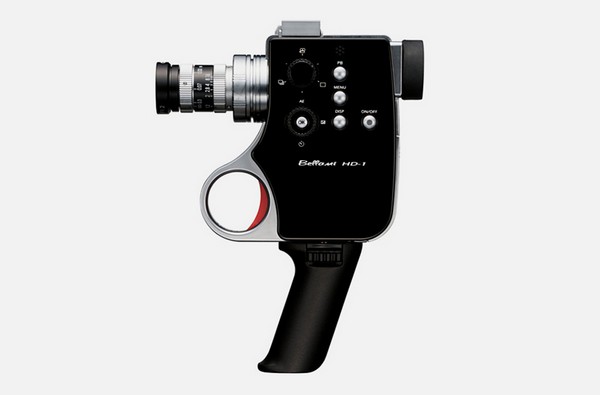
Olympus Pen E-P5 – top-end “mirrorless” camera in retro style
Apparently, Olympus employees also miss the good old days. For fans of vintage design combined with modern technical components, they released the Olympus Pen E-P5 mirrorless camera.
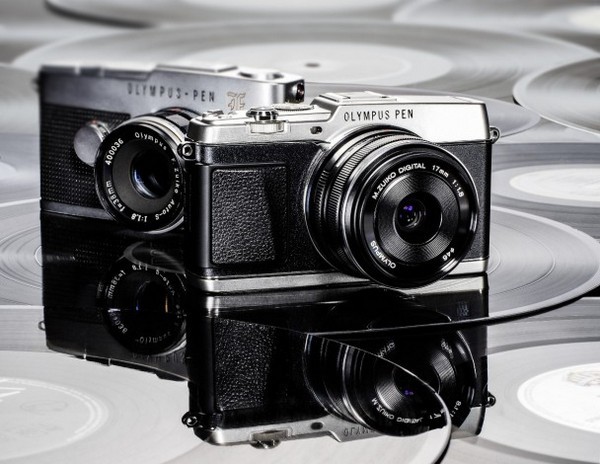
The shape of the Olympus Pen E-P5 is similar to a classic camera from the mid-twentieth century. But inside it is a 16-megapixel digital sensor, as well as a mechanical shutter with a response speed of 1/8000 of a second, which makes this device the fastest “mirrorless” camera in the world.
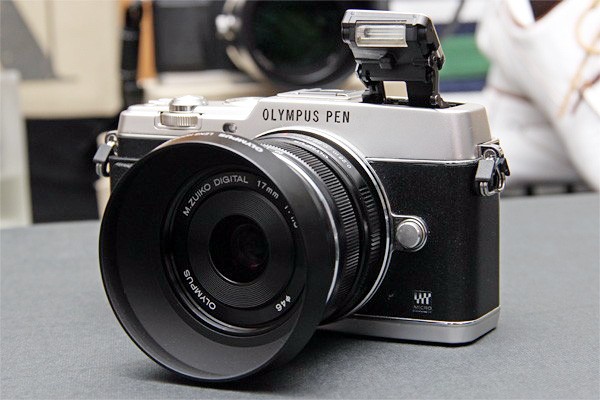
Despite the “hipster” appearance, the Olympus Pen E-P5 camera is designed for the widest possible audience of potential buyers. Moreover, this is the flagship model of mirrorless cameras from this manufacturer.
Philips Original Radio – smartphone docking station in the form of a vintage radio
In the fifties, Philips produced a fairly successful model of radios, which sold tens of millions of copies around the world. Its new variation, of course, does not claim the same mass popularity, but it will take its place in the market.
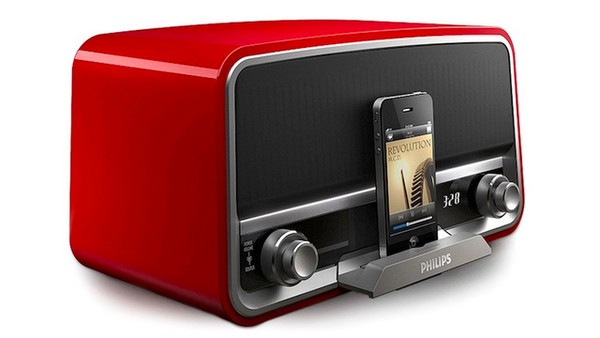
Philips Original Radio is a docking station for smartphones that turns your phone into a full-fledged music center with good sound quality. At the same time, its body is trimmed with wood, and the handles and buttons have a classic look from the fifties.
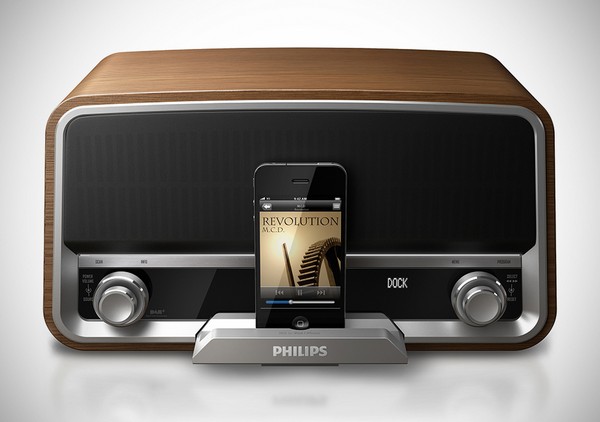
iTypewriter – Typewriter-style external keyboard for iPad
Of all the external keyboards currently being produced for tablet computers, the iTypewriter device is perhaps the most unusual and stylish. This device is created in the style of the classic Remington typewriter.
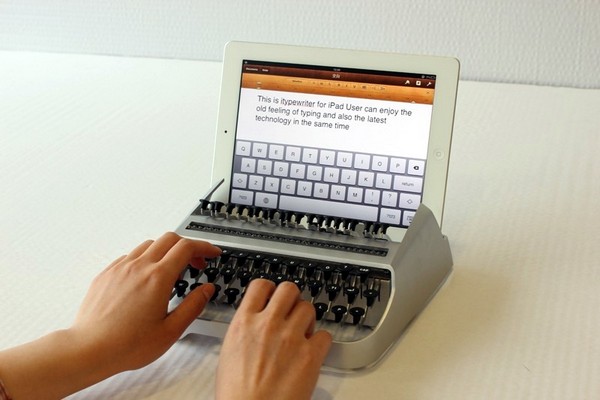
Of course, with such a device, despite its relatively compact size, you won’t be able to walk the streets. It is much less ergonomic than standard external tablet keyboards. But at home, it will be indispensable if you want to type a large amount of text on your “tablet”, while feeling like Hemingway, no less!
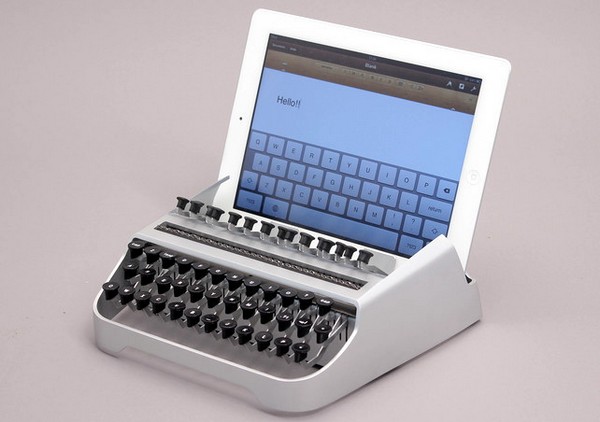
LG Classic TV - plasma TV in the style of the sixties
The Korean company LG also succumbed to nostalgia, remembering that in the sixties it was called Goldstar and produced very cute and beautiful TVs on four legs. A new incarnation of the old product appeared in 2010 under the name LG Classic TV.

LG Classic TV is a plasma TV with a screen diagonal of 14 inches, dressed in a case in the style of the sixties of the twentieth century. For those who want to plunge into the past, it provides three color modes: color, black and white and sepia, as well as a long-outdated tulip-shaped input where you can connect an 8-bit set-top box like Dendy. But, first of all, LG Classic TV is designed to work with digital tuners and a modern remote control.
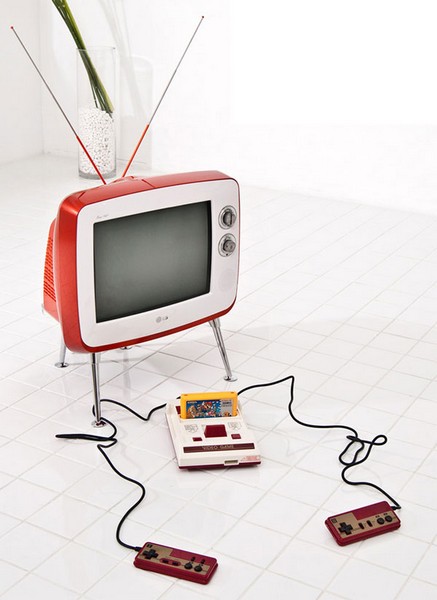
Bonzart Ampel – a two-mirror camera in retro style
In the twentieth century, there were Rolleiflex and Rolleicord cameras with two lenses, which made it possible to take pictures with a larger frame width and better focus of the image. But with the development of technologies, including digital ones, this technique had to be abandoned. She remained only in museums and in the hearts of amateur photographers.
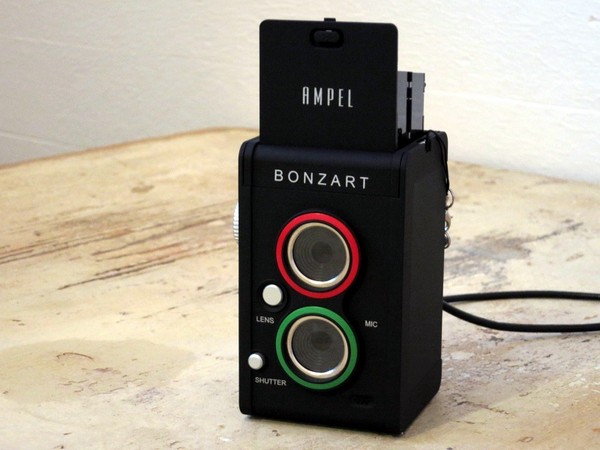
And in 2013, the Japanese company GLOBAL DC released a new version of the two-lens SLR camera - Bonzart Ampel. This device has adopted all the advantages of the obsolete photographic equipment from the Rollei company, but at the same time will receive modern technical characteristics, including a digital matrix with a resolution of 5 MP, flash memory of 32 gigabytes and a 2.5-inch LCD screen.
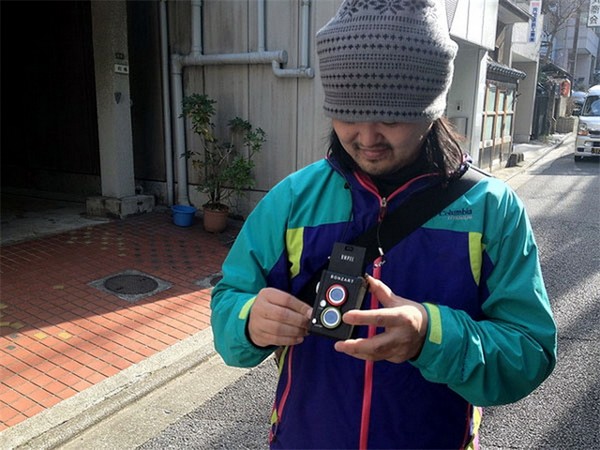
Gramowox – digital gramophone
It would seem that the advent of digital audio players and music centers has saved us forever from gramophones and tape recorders. But there are originals that are nostalgic for sound reproduction technologies that have gone into history. For such people, a device called Gramowox was created.
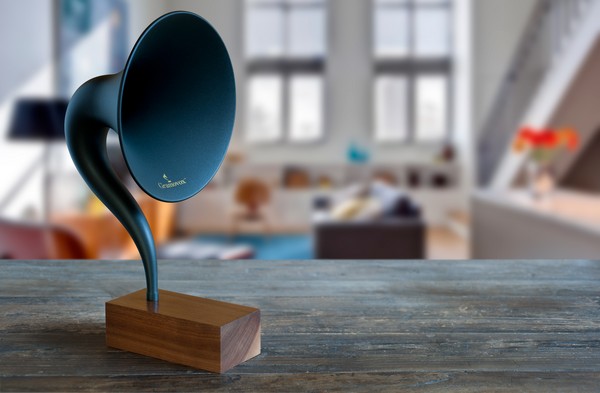
Gramowox is an elegant external speaker for digital audio devices: mp3 player, tablet, computer or smartphone. It can connect to these devices via Bluetooth wireless technology and play audio files running on them.
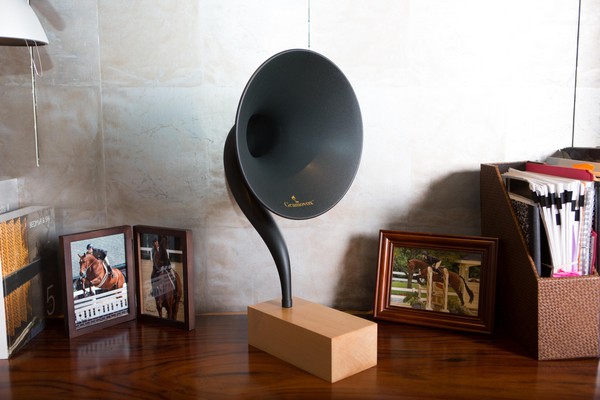
Paparazzo iPhone Light – retro flash for a smartphone
Just a couple of decades ago, people would not have understood why a phone needed a flash. And now many smartphone owners are lamenting the lack of such an option in their device or its insufficient brightness. Fortunately, there are external flashes for phones on sale, such as the Paparazzo iPhone Light.
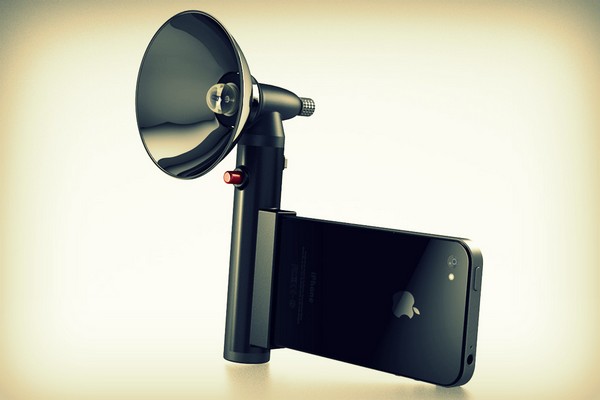
However, Paparazzo iPhone Light is a very unusual product. After all, we are talking about an external flash for a smartphone, which looks like a device from the first half of the twentieth century. But this vintageness is only in the design. And, in fact, this is a quite powerful and useful photo accessory with 300 lumens.

Moshi Moshi 03 – desktop version of the mobile phone
Under the funny name Moshi Moshi 03 hides a very stylish and interesting device in which a mobile phone is combined with a desktop one. This is a docking station that has a vintage phone look from the eighties and nineties and does not work without a smartphone connected to it.
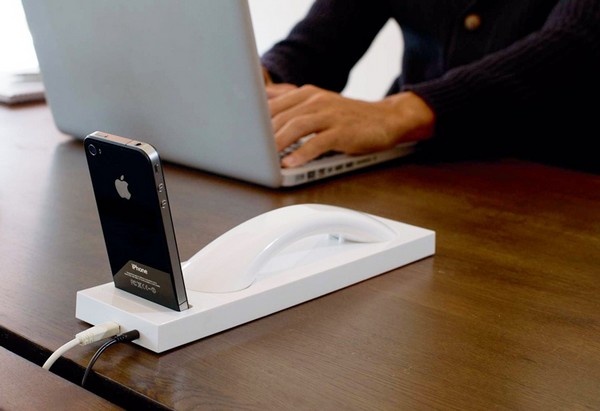
The Moshi Moshi 03 takes us back to a time when the phone was a landline and sat on a desk rather than kept in a pocket. One can argue endlessly about which is more convenient to use during a conversation – a mobile phone or a classic handset, but this device is not remarkable for its ergonomics. Moshi Moshi 03 is a beautiful retro-style office accessory that also works as a smartphone charger.
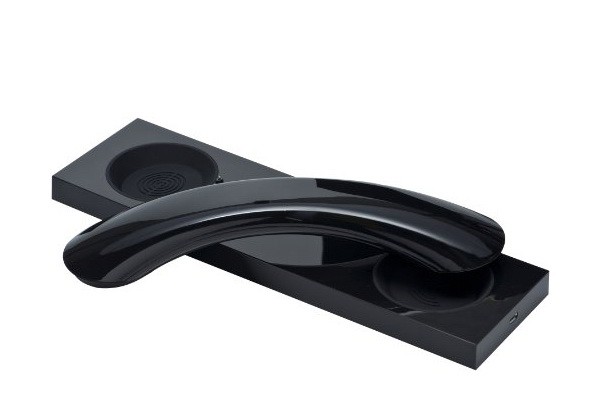
iCade – iPad-based slot machine
iCade is not a device for young people. It will appeal, first of all, to those who have still seen the classic slot machines of the eighties - huge cabinets in which children of thirty years ago hung out for hours, trying to move to the next level of a simple arcade game.

This atmosphere of old video game salons can now be created at home with the help of iCade. After all, we are talking about a controller for iPad, which is stylized as a vintage slot machine. It is, of course, several times smaller than the real prototype, but it’s unlikely that anyone would agree to install an original device the size of a good-quality closet in their home.
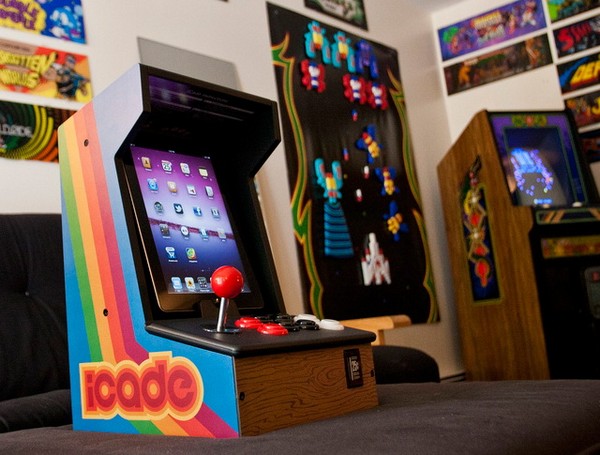
Bonus
New-old Pepsi bottle
And as a bonus, we will give a very clear example of the longing of a large number of people for the style of bygone decades. We are not talking about gadgets and devices, but about a simple bottle for a soft carbonated drink. When Pepsi returned the retro design to its 0.33-liter container two years ago, it became perhaps the biggest news around the world.

Did you like the article? Then support us, click :

